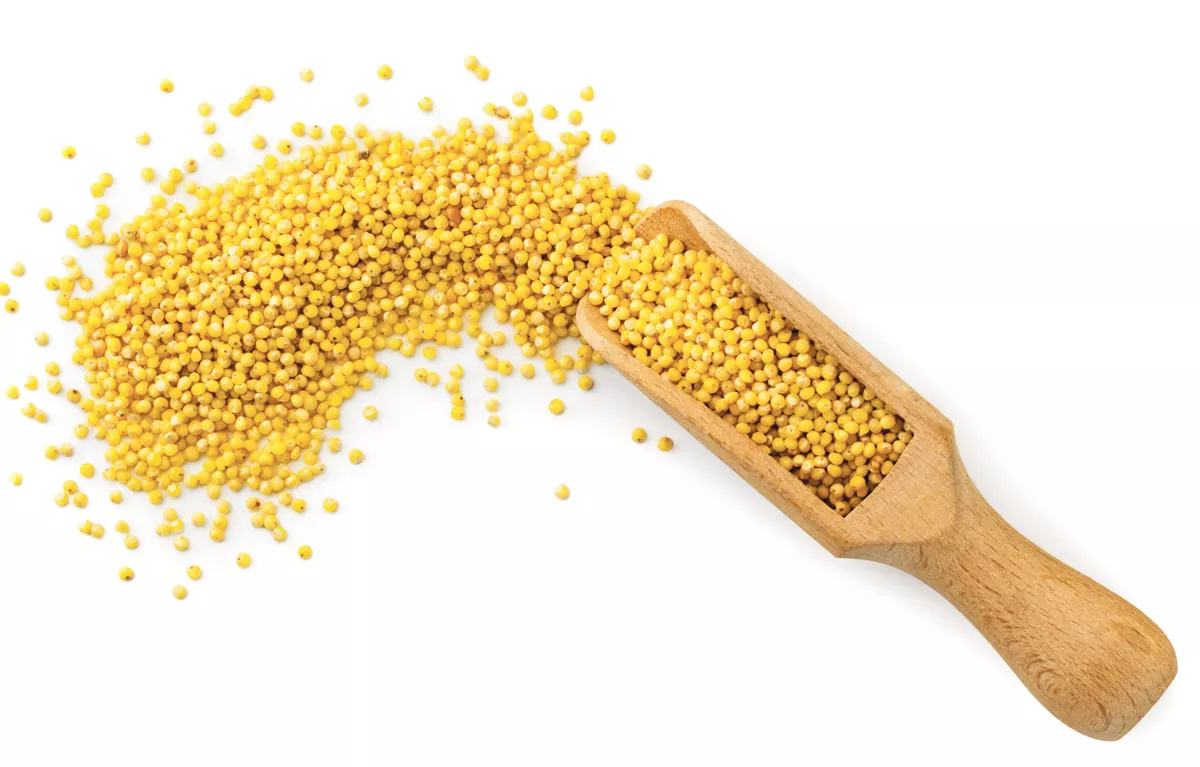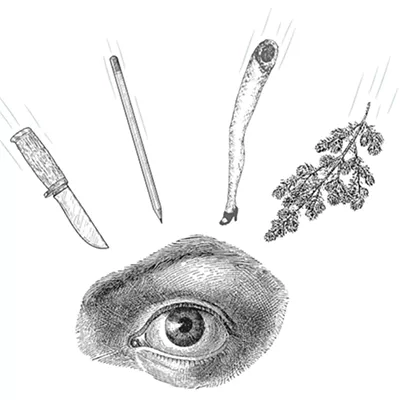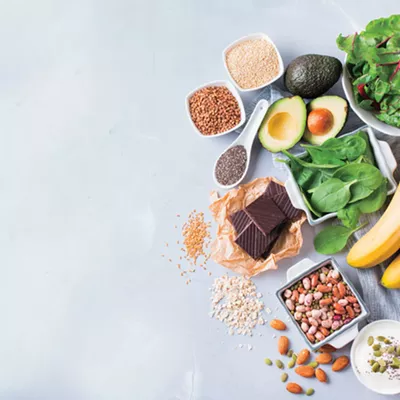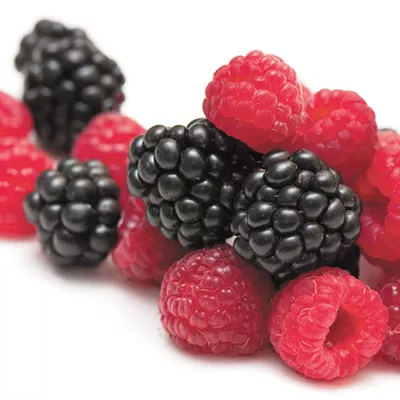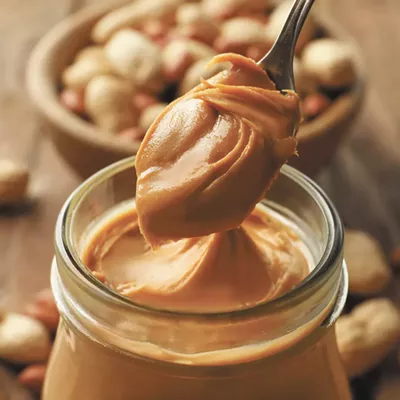Although millet may be considered an ancient grain, to modern Western society it's still an up-and-coming food trend. In America, millet has been commonly viewed as bird food or livestock feed. However, in recent years these round little grains have started to gain popularity with us humans, too.
ATTRIBUTES
A member of the grass family, millet has been a staple food in Asia, Africa and other Eastern regions for centuries. In fact, traces of millet have been dated back more than 4,000 years on ancient bowls discovered in China. Millet is a small but powerful grain that can grow in nutrient-deficient and drought-prone lands. Although they may only be the size of a seed, millet is indeed considered a grain, similar to sorghum. The most common varieties are pearl, foxtail, finger and white millet — these varieties can vary in flavor, texture, size and even color. Millet can be eaten as a whole grain, processed into flour or made into noodles.
SUPERPOWERS
Even though millet can thrive in nutrient-deficient soil, it's known for its high nutritional value. Millet is high in carbs, fiber and plant proteins; in fact, it's packed with more essential amino acids than most other cereals. These tiny ancient grains also pack high levels of antioxidants and insoluble fiber. Millet may also be good for bone health and nutrient absorption with high levels of phosphorous, and its abundant magnesium can help regulate blood pressure and blood sugar. Compared to other common grains, millet is notoriously low in glycemic index and doesn't contain gluten, making it suitable for folks with diabetes and Celiac disease or other gluten sensitivities.
HOW TO USE IT
Prepared most simply, whole grain millet can be boiled and used similarly to rice. However, many countries with millet as a staple use this versatile grain in other ways. In southeast Asia, you'll find unleavened flatbreads, similar to tortillas, used as an accompaniment to stir-fries and curries. In eastern Asia, these grains are processed into noodles to be used in soups or sauteed with veggies and spices. In Africa, millet is a staple crop that can be cooked into a porridge, steamed or used in a variety of breads. For us in the Western world, many varieties of millet are now easily available, even if they're not packing the shelves of your local grocery store, you'll likely find millet in all forms at some local bulk natural food departments and online.
Stacey Aggarwal received a Ph.D. in pharmacology from the University of Washington. She writes about biology, health and nutrition while running a lavender farm in North Idaho.

